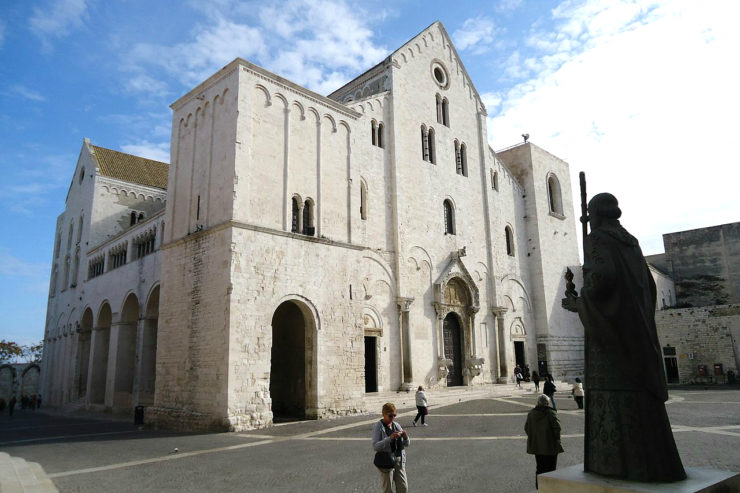Today, Friday, July 28, 2017, a mixed Italian-Vatican delegation will bring back from St. Petersburg to Bari the relic of Saint Nicholas, Bishop of Mira, which has been exhibited for the veneration of Russian faithful since last May 21. The delegation is headed by the President of the Pontifical Council for Promoting Christian Unity, Cardinal Kurt Koch, who will also meet the authorities of the Moscow Patriarchate.
In a statement on July 27, 2017, the Swiss Cardinal mentioned what is called “the ecumenism of the Saints,” which constitutes “a very beautiful opportunity for dialogue between the Churches.” “The veneration of relics can help to involve the faithful in the commitment to dialogue,” said Cardinal Koch. The relic of the Bishop of Mira (today Demre, in Turkey) was venerated over these two months and seven days by more than 2.5 million faithful.
Saint Nicholas is invoked by the faithful of different Christian Churches and denominations as Defender of the weakest and persecuted, and as Protector of girls, of sailors and of children.
The universality of his devotion transforms the Paleo-Christian Saint into a true and proper “bridge between East and West,” said Dominican Hyacinthe Destivelle, official of the Vatican Dicastery, who is part of the delegation.
The event of the temporary translation to Russia of the relic occurred after the historic meeting in Cuba between Pope Francis and Patriarch Cyril I in February 2016. It “is very beautiful symbolically,” said the Dominican, who referred to it as a “sign of friendship, to entrust to Saint Nicholas’ prayer the rapprochement between our Churches.”
Saint Nicholas is very popular in Russia. Father Destivelle recalled that a good “third of churches are under his patronage and in all rooms there is his icon before which protection of the family is requested.” The Bishop of Asia Minor is “he who comes to the aid of all concrete decisions of everyday life.” Hence, he is “the Saint that points out the good way.”
For his part, the Archbishop of Bari-Bitonto, Monsignor Francesco Cacucci, who is also part of the delegation, welcomed an “ecumenism of the people” as being particularly significant. In his address on the arrival of the relic, the Russian Orthodox Patriarch of Moscow and All Russias , Cyril I spoke, in fact, about “an intervention open to Christian unity.”
Saint Nicholas of Mira was born to a Christian family at Patara in Lycia around the year 270. Remaining an orphan after the plague, the future Saint, heir of a large patrimony, dedicated his fortune to good works.
He was one of the 318 Bishops that condemned Arianism during the First Council of Nicea (325). After his death, perfumed oil or essence gushed from his tomb, also called “myron” [unguent].
After the fall of Mira to the Seljuk Turks, in 1087 an expedition of Bari businessmen took the Saint’s relics from his tomb and brought them to Puglia. Last May 21, for the first time in some 930 years, a 13-centimeter fragment of the Saint’s left rib left the Basilica dedicated to him in the center of Bari.

Basilica San Nicola, Bari / Wikimedia Commons - Francesco9062, CC BY-SA 3.0
Russia: The Relic of Saint Nicholas Returns to Italy
The Ecumenism of Saints for the Dialogue between the Churches


